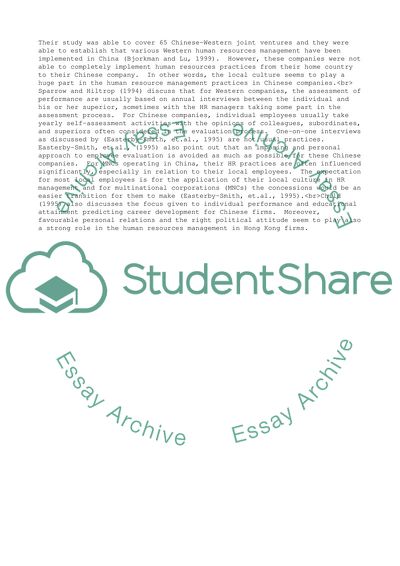Cite this document
(Comparing human resource management in multinational companies in Hong Literature review, n.d.)
Comparing human resource management in multinational companies in Hong Literature review. https://studentshare.org/human-resources/1780507-comparing-human-resource-management-in-multinational-companies-in-hong-kong-and-hrm-in-hong-kong-local-companies-are-the-difference-due-to-institutional-or-cultural-differences
Comparing human resource management in multinational companies in Hong Literature review. https://studentshare.org/human-resources/1780507-comparing-human-resource-management-in-multinational-companies-in-hong-kong-and-hrm-in-hong-kong-local-companies-are-the-difference-due-to-institutional-or-cultural-differences
(Comparing Human Resource Management in Multinational Companies in Hong Literature Review)
Comparing Human Resource Management in Multinational Companies in Hong Literature Review. https://studentshare.org/human-resources/1780507-comparing-human-resource-management-in-multinational-companies-in-hong-kong-and-hrm-in-hong-kong-local-companies-are-the-difference-due-to-institutional-or-cultural-differences.
Comparing Human Resource Management in Multinational Companies in Hong Literature Review. https://studentshare.org/human-resources/1780507-comparing-human-resource-management-in-multinational-companies-in-hong-kong-and-hrm-in-hong-kong-local-companies-are-the-difference-due-to-institutional-or-cultural-differences.
“Comparing Human Resource Management in Multinational Companies in Hong Literature Review”. https://studentshare.org/human-resources/1780507-comparing-human-resource-management-in-multinational-companies-in-hong-kong-and-hrm-in-hong-kong-local-companies-are-the-difference-due-to-institutional-or-cultural-differences.


